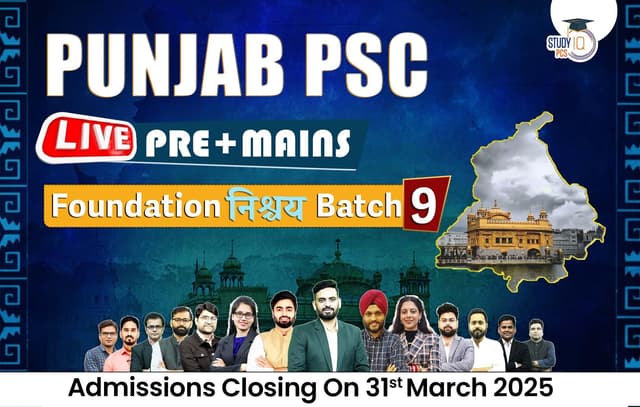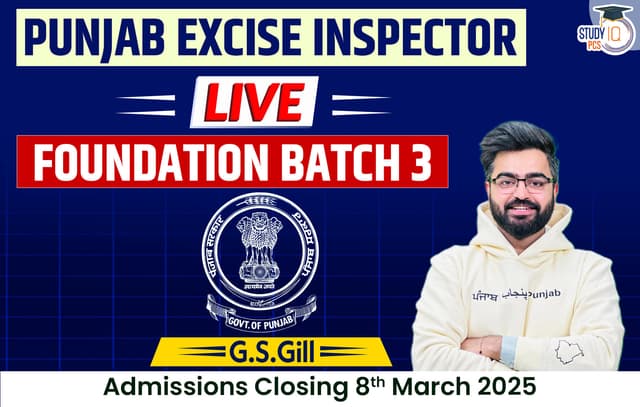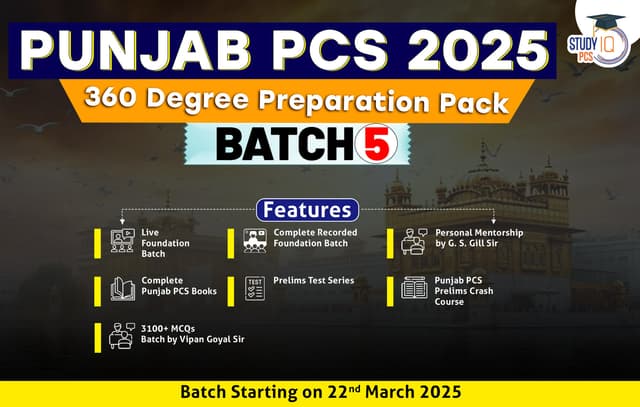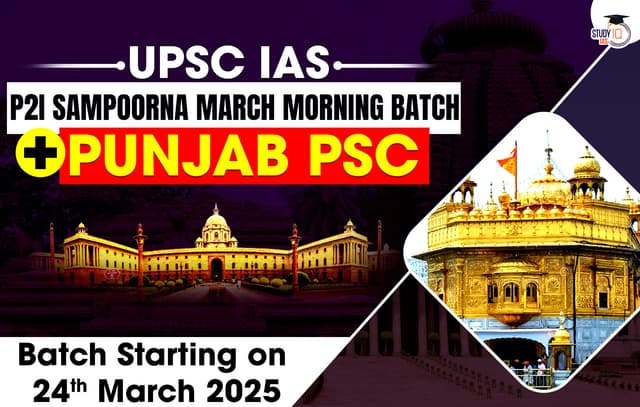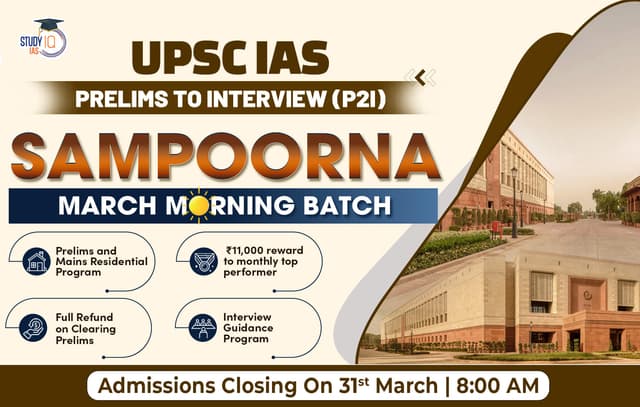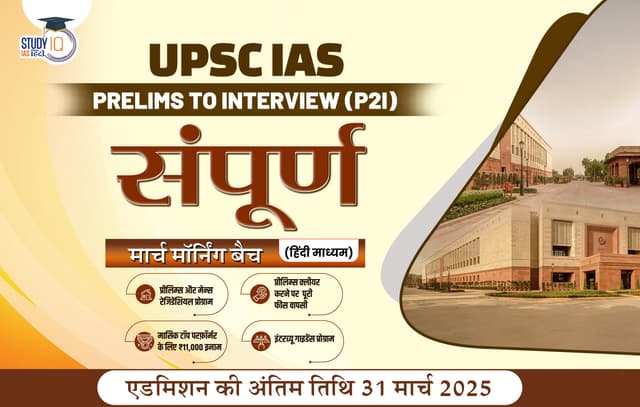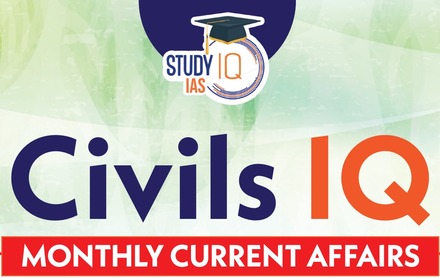Table of Contents
- The industrial sector constitutes about a fourth of the overall GSVA (Gross State Value Added) and one-third of the employment in Punjab. Manufacturing contributes the largest share of the industrial sector in Punjab followed by Construction.
- In 2023-24(A) however, the industrial GSVA in the State grew at 7.9% with national growth of 7.9%. In manufacturing, while traditionally agriculture-based sectors such as food processing and textile, wearing apparel have dominated but the light engineering sector may provide future opportunities for growth. Investment in the industrial sector has consistently formed about half of the total investment in Punjab.
- The development of industry in Punjab has largely been powered by the flourishing agriculture sector. In the 1920s, canal irrigation, increasing the spread of Railways, and global food demand due to World War I led to the commercialization of agriculture, and with it, to the growth of related industries. A similar surge was witnessed in the mid-1960s with the advent of the Green Revolution, where the booming agriculture sector once again encouraged manufacturing.
- Due to its large share in the industrial sector GSVA, manufacturing closely determines the growth tendency of the entire sector. Manufacturing accounts for more than half of the industrial sector GSVA followed by Construction. In the last decade, a reduction in the share of construction is seen but an increase in the share of manufacturing, electricity, gas, water supply and other utilities was evident.
| Circular Economy |
Origin and Relevance
Key Circular Economy Initiatives in IndiaRight to Repair Portal (2022)
India Plastics Pact (IPP) 2021
Mission “LiFE” (Lifestyle for Environment)
|
Manufacturing Sector: Observations and Reforms (As per Economic Survey 2023)
Significance of Manufacturing Sector
- Economic Contributions:
-
-
- Reduces Import Dependence: Minimizes reliance on imports, leading to a reduction in the Current Account Deficit (CAD).
- Employment Generation: Direct employment to over 12 crore people.
- Key job-creating sectors include textiles and construction.
-
- Multiplier Effect:
-
-
- Industrial growth stimulates service sectors like banking, insurance, logistics, and transport, creating indirect employment opportunities.
- A vibrant manufacturing sector is a catalyst for overall economic development.
-
- Global Rankings:
-
- Mobile Manufacturing: India is the second-largest mobile phone manufacturer globally.
- Pharmaceuticals:
- Largest producer of generic medicines.
- Third-largest producer by volume.
The manufacturing sector accounts for more than half of the industrial GSVA of Punjab and 50% of the state’s industrial employment. Manufacturing may be registered, or unregistered.
- Registered manufacturing: The top Industries in Punjab, by a share in total value added, by the registered manufacturing sector in the state is the Food Product Industry followed by Machinery and equipment.
- Unregistered Manufacturing: The top sector by a share in GVA for unregistered manufacturing is wearing apparel followed by food products and textiles respectively.
Challenges Facing the Manufacturing Sector
- Supply Chain Disruptions: Post-COVID-19 issues such as shortages of microprocessors and semiconductors.
- Geo-Political Tensions: Russia-Ukraine war and China-Taiwan conflict have inflated the cost of imported raw materials like crude oil and fertilizers.
- Skilled Labor Shortage: Inadequate availability of trained workers for advanced manufacturing roles.
- Lack of Private Sector R&D: Insufficient investments in innovation and research by private companies.
- Macroeconomic Factors: RBI’s hike in repo rates to counter inflation has led to decreased demand for housing and automobiles.
- Other Concerns:
-
- High rainfall in 2022 slowed down the construction sector.
- Low domestic demand caused companies to sell older stock, leading to reduced fresh production.
- Potential risks from new COVID-19 variants.
Construction Sector
- The construction sector forms an important sector for Punjab and is the second-largest
employer in the industrial sector after manufacturing. Given the poor working conditions, the State Government has undertaken various initiatives for the social and economic security of the construction workers in the State.
- Punjab Building and Other Construction Workers’ Welfare Board, constituted in 2009, provides social and economic benefits to Building and other Construction (BOC) workers. Some specific schemes include Funeral Assistance Scheme, Balri Birth Gift Scheme, Shagun Scheme, Pension Scheme, etc.
Khadi and Village Industry
- The Khadi and Village Industries Commission (KVIC) was established by the government of India in 1957. It not only provides employment to people in rural and semi-urban areas at low investment but also utilizes local skill resources and provides part time as well as a full time work to rural artisans, women and minorities. The highest and lowest number of KVIC units in Punjab are in Patiala and Tarn Taran districts respectively.
Food-Processing Industry
- A well-developed food processing sector helps in improving value addition, promotes crop diversification, ensures better return to the farmers, promotes employment as well as increases export earnings. This sector is also capable of addressing critical issues of food security, food inflation and providing wholesome, nutritious food to the masses. Hence, not surprisingly, it is referred to as the ‘sunrise industry’. Within food processing, grain mill products, starches, and starch products are the highest contributors, linked to Punjab’s abundant production of paddy and wheat.
- In terms of profit per unit however, the fruits and vegetable processing, beverages and dairy products were at the top while processing and preserving of meat and other food products were at the loss. This provides further reason for expanding crop diversification and promoting livestock rearing.
- Out of the three Mega Food Parks approved for Punjab, the International Mega Food Park Ltd, Fazilka and Punjab Agro Industries Corporation Ltd, Ludhiana are already operational while Sukhjit Mega Food Park & Infra Ltd, Kapurthala continue to be under implementation.
Textile and Apparel Manufacturing Industry
- Due to the availability of a rich resource base in Punjab and its robust spinning capacity, the textile industries are a major contributor to the total output of the State.
- The textile and apparel manufacturing industry contributed 18% of the GVA in the registered manufacturing sector of Punjab in 2021-22. Out of the total GVA created by textile and apparel manufacturing, maximum was contributed by spinning, weaving, and finishing of cotton textiles, followed by Knitted and crocheted apparel.
Coal Industry
All India Production of coal during 2021-22 were 778.19 MT (Provisional) with positive growth of 8.67%
- India is second largest coal producer in the world
- As per the coal directory 2020-21, India is the second largest importer
- India has imported 215.25 million tonnes in 2020-21, 248.54 million tonnes in 2019-20 and 235.35 million tonnes in 2018-19
- Major countries from where the coal is being imported are Indonesia, Australia, South Africa & USA
- The export of coal from India is meagre
- Indian coal is mainly exported to Nepal, Bangladesh and Bhutan
Details of import of coal and products i.e. coke during the last 4 years is as under:
| Coal | 2018-19 | 2019-20 | 2020-21 | 2021-22 |
| Total Import | 234.35 | 248.53 | 215.25 | 208.93 |
| Non-cooking Coal | 183.51 | 196.70 | 164.05 | 151.77 |
Light Engineering
- Light engineering is a diverse industry comprising low technology manufacturing such as castings and forgings to high technology manufacturing of industrial process control equipment and diagnostic medical instruments. Light engineering forms about 6.3% of unregistered manufacturing. Of these, metal fasteners and bicycle production form the majority share of GVA. Ludhiana is an important bieyele production cluster. Also, Jalandhar cluster in the state is well known for the casting of machinery parts and agricultural implements.
Sports Goods Industry
- According to the Annual Survey of Industries 2021-22, the Sports goods industry contributed 0.7% of the GVA in the registered manufacturing sector of Punjab. Jalandhar is the hub for sports goods manufacturing in the state. The Punjab government intends to set up a Sports Goods Park in Jalandhar.
Electricity
- Punjab has been able to meet the increasing power demand. The estimated demand for electricity has consistently grown in the State. Despite fluctuations in electricity generation, the availability of electricity has been more or less on par with electricity demand. Naturally, this has also increased power consumption.
- As of 2023, the majority of the installed capacity (58.3%) in the state comes from thermal sources. However, renewables and clean power sources, such as nuclear (1.4%), hydro (26.6%), and other renewables (solar, wind, etc.) constitute the remaining (13.7%). This could be increased further if Punjab were to leverage the power of biomass, abundant in the state due to its large agricultural sector.
- Of the installed capacity, 23% is owned by the government of Punjab, 50% is privately owned and 27% is Centrally owned.
Iron and Steel Industry
- These are feeder industries, supplying other industries’ raw resources with their products.
India is currently the largest producer of sponge Iron or DRI in the world and the 2nd largest finished steel consumer in the world after China.
- Trends in Trade: During last five years, India was net exporter of total finished steel from (2017-2021)
- Challenges of Steel Sector: Finance+ logistic+ Raw materials+ Environment and energy consumption
- Reforms: National Steel Policy, 2017: It will focus on enhancing domestic consumption, high quality steel production and making the sector globally competitive
Size-based Classification of Industries
Small scale industries
- The MSME sector plays a crucial role in providing large employment opportunities at comparatively lower capital cost. MSMEs also help in industrialisation of rural and backward areas, thereby, reducing regional imbalances.
- Punjab has a strong base of more than 4 lac small scale units belonging to auto components, bicycle parts, hosiery, sports goods, agricultural implements etc. During 2021-22, the number of MSME units are 1,82,775 leading to employment to 9.35 lac people.
- Most of the small scale industries’ production is concentrated in Ludhiana followed by Jalandhar, Fatehgarh Sahib, Amritsar, and SAS Nagar in output production by small scale units.
- The government formulated a policy for MSME growth, that broadly classified it into five stages – Ideating a Business, Starting a Business, Growing a Business, Reviving a Business and Exiting a Business and the policy accordingly addressed various needs that emerge in each of these stages, with a growth and performance oriented approach. The government has also set up ‘MSME Punjab’, as part of the Punjab Industrial and Business Development Authority to focus on the development of MSMEs.
Large and Medium Enterprises
- This sector has also seen growth and in 2021-22, the total number of large industrial units in Punjab were 1038 employing around 3.64 lac persons.
- Ludhiana’s industrial output production was highest in the State followed by Bathinda, SAS Nagar and Fatehgarh Sahib in output production by large scale units.
Micro, Small & Medium Enterprises (MSME)
MSME Ministry
- CPSEs: National Small Industries Corporation (NSIC), an NBFC facilitating MSME loans
- Statutory Bodies:
- Khadi & Village Industries Commission (KVIC)
- Coir Board
Key Schemes and Initiatives
- Prime Minister’s Employment Generation Programme (PMEGP):
-
-
- Started in 2008, continued till 2020.
- Aims to promote new micro-enterprises in non-farm sectors.
- Provides credit-linked subsidies of 15-35% based on rural/urban location and entrepreneur’s category (SC/ST/Women/PH/NE).
-
- Public Procurement Order, 2012:
-
-
- Mandates Central Ministries and PSUs to procure:
- 25% of goods/services from Micro and Small Enterprises (MSEs).
- 3% from women-owned MSEs.
- 4% from SC/ST entrepreneurs.
- Promotes local suppliers with at least 50% local content.
- Mandates Central Ministries and PSUs to procure:
-
- MSME-Sambandh Portal: Tracks compliance with public procurement targets.
- Interest Subvention Schemes: Supports MSMEs with reduced interest rates on loans.
- Skill Development: Training programs under schemes like “Samarth” for youth employment.
- Ease of Access to Credit: Initiatives like CGTMSE (Credit Guarantee Fund Trust for Micro and Small Enterprises) for collateral-free loans.
Key MSME Ministry Initiatives
- ASPIRE (2015): Encourages innovation and rural entrepreneurship by establishing business incubators and startup funds for agro-based industries
- Solar Charkha Mission (2018):
-
-
- Provides training, solar-powered equipment, and subsidies for rural weavers.
- Targets 1 lakh new jobs.
-
- Gramodyog Vikas Yojana:
-
- Focuses on developing village industries.
- Includes projects like manufacturing incense sticks.
Government Initiatives to give a boost to Industries
Ease of Doing Business initiatives
To give boost to Ease of Doing Business, the State has implemented following notable reforms:
- The government has notified the New Industrial and Business Development Policy, 2022 (IBDP-2022) providing holistic approach, EoDB reforms and fiscal incentives both for the existing and new units.
- To promote the Logistic Sector, Integrated Logistics & Logistic Park Policy, 2023 has been notified.
- Foundry & General Engineering Cluster, Kapurthala; Garment Cluster, Ludhiana;
Sewing Machine Cluster, Ludhiana; Cutting Tool Cluster, Patiala; Modern Printing & Packaging Cluster, Ludhiana are being set up.
Development of Invest Punjab Business
- First Portal ‘Invest Punjab Business First Portal’ – Online Single Window System for granting regulatory clearances has been extended to the district level. 143 regulatory services of 22 participating departments are now being given through the State Single Window Portal without any physical touchpoints with any department official.
Micro and Small Enterprises Cluster Development Programme
- The objective of the scheme is to create common facility infrastructure for enhancing the productivity competitiveness as well as capacity building of small enterprises and their collectives. These Common Facility Centres (CFCs) are being created by Special Purpose Vehicles of the MSME entrepreneurs. In this scheme, the GOl provides 70% to 90% assistance of the project cost (max 30 crores) and the balance amount is to be contributed by the SPV/State government.
- As per guidelines MSE-CDP, 7 proposals were forwarded to the GOl out of which 2 CFC proposals have been completed and 5 are accorded final approval. The completed projects are:
- Mohali Hi-Tech Metal Cluster, Mohali
- Oil Expeller & Parts Cluster, Ludhiana
Punjab Industrial and Business Development Policy 2022
- Punjab Government has unveiled a new industrial policy which aims to facilitate the manufacturing & services sector by creating an investor-friendly environment in Punjab. This
Policy lays out a comprehensive framework for attracting investment in Ultra mega and Mega Projeets, Anchor Units, Large Units, First Two Units in the Border Zone in each sector of Manufacturing and Service, facilitating use of doing business, and promoting MSMEs, Start up & innovation.
Industries in Punjab
| SNo. | Type/Name of the Industry | Location |
| 1 | Radio Amplifier and Loudspeaker | Jalandhar, Ludhiana |
| 2 | Pharmaceutical Works | Amritsar, Mohali, Ludhiana, Bathinda |
| 3 | Milk Products | Nabha, Moga, Bathinda, Hoshiarpur, Rajpura, Mohali |
| 4 | Industrial Cables | Rajpura |
| 5 | Textiles and Woolens | Ludhiana, Batala (Oswal Woolen Mills) |
| 6 | Mensuring Tapes | Ludhiana |
| 7 | Fertilizers | Nangal, Bathinda, Anandpur Sahib |
| 8 | Copper Wire | Patiala |
| 9 | Brewery | Ludhiana, Mubarakpur |
| 10 | Sports Goods | Jalandhar |
| 11 | Chemicals and Acid | Amritsar, Mohali |
| 12 | Rail Coach Factory | Kapurthala |
| 13 | Iron Forge | Mandi Gobindgarh |
| 14 | Oil Refinery | Bathinda |
| 15 | Nestle | Moga |
| 16 | Dell | Mohali |
| 17 | Hawkins | Hoshiarpur |
| 18 | Punjab Tractors | Mohali |
| 19 | Hero Cycles | Ludhiana |
| 20 | Sonalika Tractors | Hoshiarpur |
| 21 | Ranbaxy | Mohali |
| 22 | HMEL Refinery | Bathinda |
| 23 | Ricela | Dhuri (Distt. Sangrur) |
| 24 | KRBL Rice Plant(India Gate) | Dhuri (Distt. Sangrur) |
| 25 | Swaraj Mazda | Rupnagar |
| 26 | Brassware | Amritsar |
| 27 | Diesel Component Works | Patiala |
| 28 | Trident Group | Barnala |


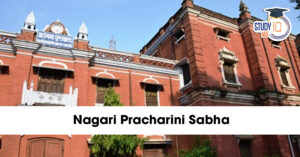 Nagari Pracharini Sabha Revival: Backgro...
Nagari Pracharini Sabha Revival: Backgro...
 Ryotwari System in India, Features, Impa...
Ryotwari System in India, Features, Impa...
 Battle of Plassey, History, Causes, Impa...
Battle of Plassey, History, Causes, Impa...
